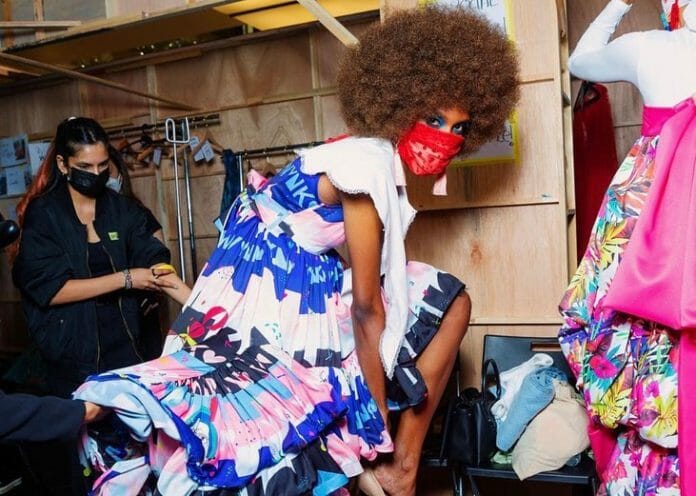In November, Kuala Lumpur Fashion Week 2021 made a grand return with our homegrown designers showcasing their stunning beautifully ready-to-wear collections both digitally and in real life – all inspired by their originality and creativity.
In recent years, the use of innovative technology such as digital printing is transforming the way the fashion industry produces clothing materials. Digital printing refers to methods of printing from a digital-based image directly to a variety of media such as textiles. Similar as to how you would print a document, this is an inkjet process utilizing a series of print heads moving back and forth, spraying dyestuff across the chosen material.
Fashion designers rely on innovation to encourage self-expression, improve consumer experience and keep the fashion industry moving forward. Fortunately, digital printing provides endless possibilities for designers to create their desired designs through streamlined procedures, bringing bold and innovative ideas come to life on runaways and in physical stores. When it comes to colours, there is no limit to how many colours designers may use when employing digital textile printing, offering them complete freedom to use source images such as photographs and artworks.
Therefore with digital printing and its unlimited possibilities, digital printers enables designers to print anything and there are no limitations to one’s imagination.
Well-known fashion designer, Ellie Norman, has been embracing digital printing to innovate colourful motifs and eclectic print patterns in Malaysia. Her love for bold prints inspired her to create her own fashions line – My Apparel Zoo – featuring exotic and symmetrical African print. Soon, her desire for design innovation encouraged her to give digital textile printing a go in 2016.
In fact, Ellie partnered with Epson Malaysia during Kuala Lumpur Fashion Week back in 2017 and was impressed by the high quality output of digital printing. She was also able to shorten the time taken of the entire production process as digital printing is a lot faster than the traditional stamping process. For instance, the data in digital printers makes it simple to colour match samples based on the original design so that manufacturing can begin immediately. Since the initial timing for colour matching is not required, it saves a part of the typical production time.
According to research by Deloitte, more than half of consumers are interested in purchasing personalised and customised items due to growing preferences. This indicates that consumers are seeking for more unique and distinctive designs in fashion apparels. As such, there has never been a more opportune moment for fashion companies and designers to embrace digital printing in order to fulfil customer needs.
With the transition to digital textile printing, businesses will be able to handle unexpected delivery demands with shorter lead times, which benefits many textile and garment industry participants. For example, Epson’s SureColor™ F-Series is capable of delivering high-speed printing with reasonable output quality and durability on multiple different fabric types. It also utilises Epson’s revolutionary PrecisionCore TFP printheads, one of the fastest inkjet delivery technologies you may find.
To keep up with the evolving fashion industry standards and consumer demands, fashion businesses may consider digital printers as a future-proof equipment investment to offer high-quality items. Aside from the potential to save production time and offer more customised fashion pieces, digital printers allows its users to improve productivity while being cost-efficient. With the Epson SureColor F-Series, designers can surely get the best of printing technology yields and continue to carry forth the fashion industry.
We are witnessing the advancement of the industry as each development becomes more inventive and unique. As a result, the fashion industry continues to grow with the help of technology, allowing designers to refine and develop their creations over time.









